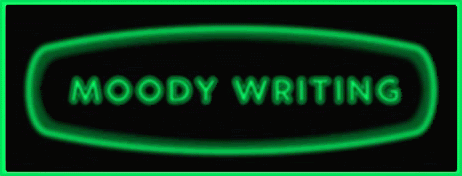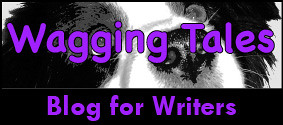Drama is conflict. Smooth sailing doesn’t make for
much of a story. Things have to go wrong.
The main character has to be involved in these
conflicts. It can’t just happen to her, she must make decisions and choices
that affect the story. A character who waits, observes, runs away or takes the
easiest way out is much, much harder to make interesting. They are in effect
avoiding the telling of their own story.
But as well as choosing which path to take and then
seeing what happens next, the actual choosing is also part of the story. Why
this option? What are the important factors that led to the decision? Which
risks are worth taking and which aren’t?
Giving an indication of these things not only
immerses the reader deeper in the story, it also gives them a better idea of
who the character is and what they’re capable of.
And while you need to make sure there’s enough at
stake or a sense of urgency so the character can’t avoid taking action,
contriving events too such an extent that there’s only one option available
won’t help characters reveal themselves.
If there’s only one thing to be done, then anyone
would do the same thing, and that takes away the opportunity to learn about
this character, something that’s very valuable early on in a story.
Of course, how they go about achieving their goal
will vary from character to character, but that’s something that will become
apparent over the course of the narrative. You also need to connect the reader
and character early on so they want to know more about this person.
Providing a number of options and showing which
this character chooses is a quick way to give the reader an early peek into a
character.
Having a lot of options that are either impossible
or too easy won’t add any interest. They have to be viable options and they
need to have consequences. Choosing to go left or right at the crossroads is arbitrary.
Choosing left through the crocodile swamp or right through the river full of piranhas
is a much more interesting choice.
But there’s more to these sorts of decisions
than flipping a coin.
Why choose one over the other? What’s the thought
process? What are the precautions and preparation? These are the things that
make the approach to the action as engaging as the action itself.
Once the decision is made and we understand why one
path is selected over another, then the next step is to take that path and for
it to lead to disaster.
This isn’t always going to be the case, but most of
the time the way to get the most out of a situation that has obvious risks attached
is for the worst outcome to come true. Because this requires character to act.
If the character goes through the swamp with
crocodiles and luckily avoids any of them, that won’t be a very exciting
story. That doesn’t mean they should
head into the swamp and then get attacked and then fight their way across.
First, how do they plan to get through the swamp?
If, for example, they decide to disguise a canoe to
look like a crocodile and then cunningly float through the swamp, you can see
the plan, and also get an idea of the mindset of the people involved. And to
get the most out of it, they can’t just succeed. So maybe an amorous croc decides to fall for
the canoe and mount it in loving fashion...
The point is the plan should be specific to the
character’s way of thinking, and the way it goes wrong should be specific to
the plan.
A character’s struggle with which way to go will
link directly to how they react when it goes wrong. The fact they knew things
could go wrong and went for it anyway will make them more likeable. Their plan
to overcome the obstacles will give the reader something to root for. When
things go wrong they will get our sympathy. When they get in trouble but find a
way to keep going, they will win our admiration.
All these things are linked and they start with a
character who is conflicted about what to do.
This can work for any situation. You can take any
choice and make it harder (by making the consequences clearer).
Showing the
problems the character has with each option, and then why they choose to do
what they do will help show the kind of person they are when facing trouble.
Having things go wrong will show what kind of person they are in a crisis.
Let’s say Mary discovers her sister’s husband is a
professional thief responsible for a bank robbery where people died. What does
she do?
If she goes to police, the sister and her kids will
be left without anyone to take care of them. The sister probably won’t thank
her for it. If she keeps quiet, more people could die.
The question at this point is what kind of person
is Mary? Is she shy and not the type to get involved in other people’s
business? Or is she mouthy and always sticking her nose where it doesn’t
belong?
If she’s the mouthy type, and she’s going to get involved,
how is that a difficult decision for her? If she isn’t conflicted about the
choice she has to make, it won’t feel like a big deal.
In this sort of situation where it feels like the
path is obvious and that it will eventually lead to dramatic stuff, it’s worth
taking a moment to consider how dramatic it is right now.
Mary's the type who wants to say something, that
much is clear, but how can you make what she does less predictable?
If she goes to the sister to warn her and discovers
that she already knows and is fine with it, then what?
But what if she sees the brother-in-law slap her
sister around?
But what if the kids will get taken away if the law
gets involved?
You can always find a way to make the right thing to do less clear cut.
If you found this post useful please give it a retweet. Cheers.








































































































11 comments:
Think like the character. That should be obvious, but sometimes that eludes writers.
@Alex - much easier to thing like the writer. Makes life easier, but less interesting.
Conflict is the story. Without it, there's no reason for anything.
I think it is similar to real life, there are always options and consequences to think about. Just not all people think of it. And the next time I have to cross a river full of crocs, I'll ponder about the possibility you offered here, hahaha.
Great article with great insights. I'll keep in my mind to make my characters' options have negative consequences. :)
Great post!!!! It's all true. And I laughed at your amorous crocodile btw. ;D
Hey, Mood,
It is important to see all the possibilities. Immersing yourself in the character is the way to go for sure. Many of our characters think and act very differently that we do. The writing needs to be real and believable.
In all of my first person writing, I am the character, one has to be. But in third omniscient the writer is on the outside observing the actions of characters,,, When done successfully, the reader is in for a thrill because, they too, are on the outside looking in.
I was told I must make the character suffer, make the character weigh the pros and cons and see all the possibilities before taking an action.
@JE - it certainly helps.
@Al Diaz - I'm pretty sure my croc plan is foolproof.
@Josh - thanks!
@Lisa - cheers.
@Michael - if you can immerse the reader in the story you can pretty much take them anywhere, I think.
@Rachna - good advice.
Loved this one .... I just came across it as I was doing a blog on a similar theme for tomorrow. Getting inside the character's head and understanding their internal conflicts is, ultimately, what makes or breaks a good novel.
Thanks for a nicely timed bit of inspiration!
@Mary - yvw!